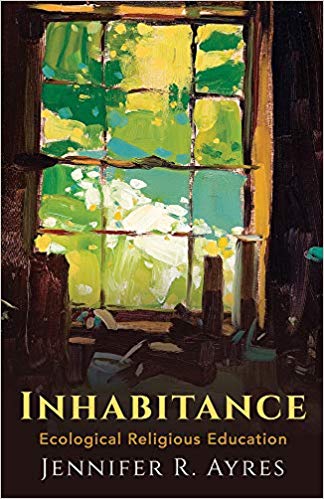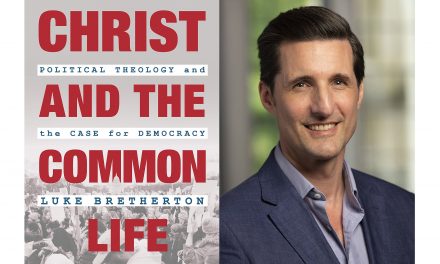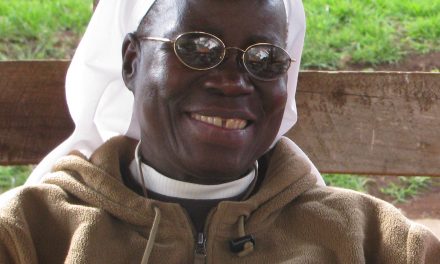This book review is scheduled to appear in the June 2020 issue of The Journal of Moral Theology.
Inhabitance: Ecological Religious Education. By Jennifer Ayres. Waco, TX: Baylor University Press, 2019. xiv + 202 pages. $ 39.95.
Jennifer Ayres’ latest book is a wonderful exploration of what it means to inhabit our home planet and educate others in ways that foster responsible inhabitance. We become an inhabitant, she insists, “by seeking to know and love a particular place in some detail and honoring its rhythms, limits, and possibilities.” (3) For a variety of reasons, not least our failures in education, inhabitance is “stubbornly elusive, especially in the United States.” (3) Drawing on a wide range of academic fields and scholars, Ayers not only develops a theology of inhabitance but also breaks new ground in pedagogy. Indeed, herein lies the real contribution of this book.
In the first chapters, Ayres cogently argues that we humans are ecological (from the Greek oikos for house) creatures living on the earth, our common home. We are humans from the humus, ’adam from the ’adamah, called to care for our home planet and especially our particular place. Following the lead of Juergen Moltmann and Wendell Berry, Ayres affirms our need, in a broken world, to engage in ecological homecoming and homemaking—what she calls “the art of inhabitance.” (17)
This art requires sustained attention to character—to virtues and virtue formation. Ayres argues we need to become “loving, just, and responsible members of God’s household” (20)–a triad that appears many times in the book. The specific ecological virtues she has in mind include wisdom, love, wonder, grief, hope, and resilience. Ayres rightly emphasizes that virtues include affections and are formed by practices and habits over time and she perceptively points to the need for that kind of wisdom called phronesis, practical wisdom, by the ancient Greeks. I am less persuaded by the claims she makes in her discussion of love, since storge is left out entirely, philia is given short shrift, and eros seems to be associated with “human desires, motivations, and vulnerabilities” (31) in a way that agape is not. I agree that “conceptions of ecological love, absent the power of eros, are impoverished” (30), but I am not convinced that “erotic engagement with the earth allows humans to engage the world with physical touch and intimacy rather than solely detached observation,” (30) as if other kinds of love do not involve touch or intimacy.
In the heart of the book (chs. 3, 4, and 5) Ayres creatively develops her ideas about ecological religious education—an education “that should nurture in Christians the desire, capacities, and commitment to be just and loving inhabitants of God’s earth” (43). Her description of this education is full of insight, from her emphasis on the need for imagination to her stress on the role of experience and emotion in learning. Relying on the work of Rachel Carson, John Dewey, and David Orr, among others, Ayres emphasizes the need for educational practices that are embodied, affective, and reflective. That is, to educate for inhabitance we must involve our bodies, engage our emotions, and reflect on our experiences. This means, more often than not, that we must do education outside. Ayres also emphasizes how the practices of inhabitance are attentive to place, embrace vulnerability, and cultivate community—features often forgotten in discussions of education.
The role of place, properly in my view, is given special attention. Ayres follows bell hooks and Wendell Berry to remind us of the power of place, without romanticizing place or ignoring the wounds of those in that place. Indeed, one distinctive feature of the book is attentiveness to vulnerability—both ours and that of our home planet—and the necessary role of ecological grief. Also peppered throughout the chapters are winsome stories of individuals and churches engaged in creative ecological religious education, whether the Trinity United Church of Christ on 95th St. on the south side of Chicago or the Elkin Presbyterian Church in rural North Carolina. I found myself learning much from reading about how congregations are creatively doing education for inhabitance.
This is very thoughtful and timely book on what it means to inhabit our home planet. When many are longing for home, this book sheds light on homemaking. In a time of increasing despair, Inhabitance is a gift that nurtures ecological hope.
STEVEN BOUMA-PREDIGER
Hope College




